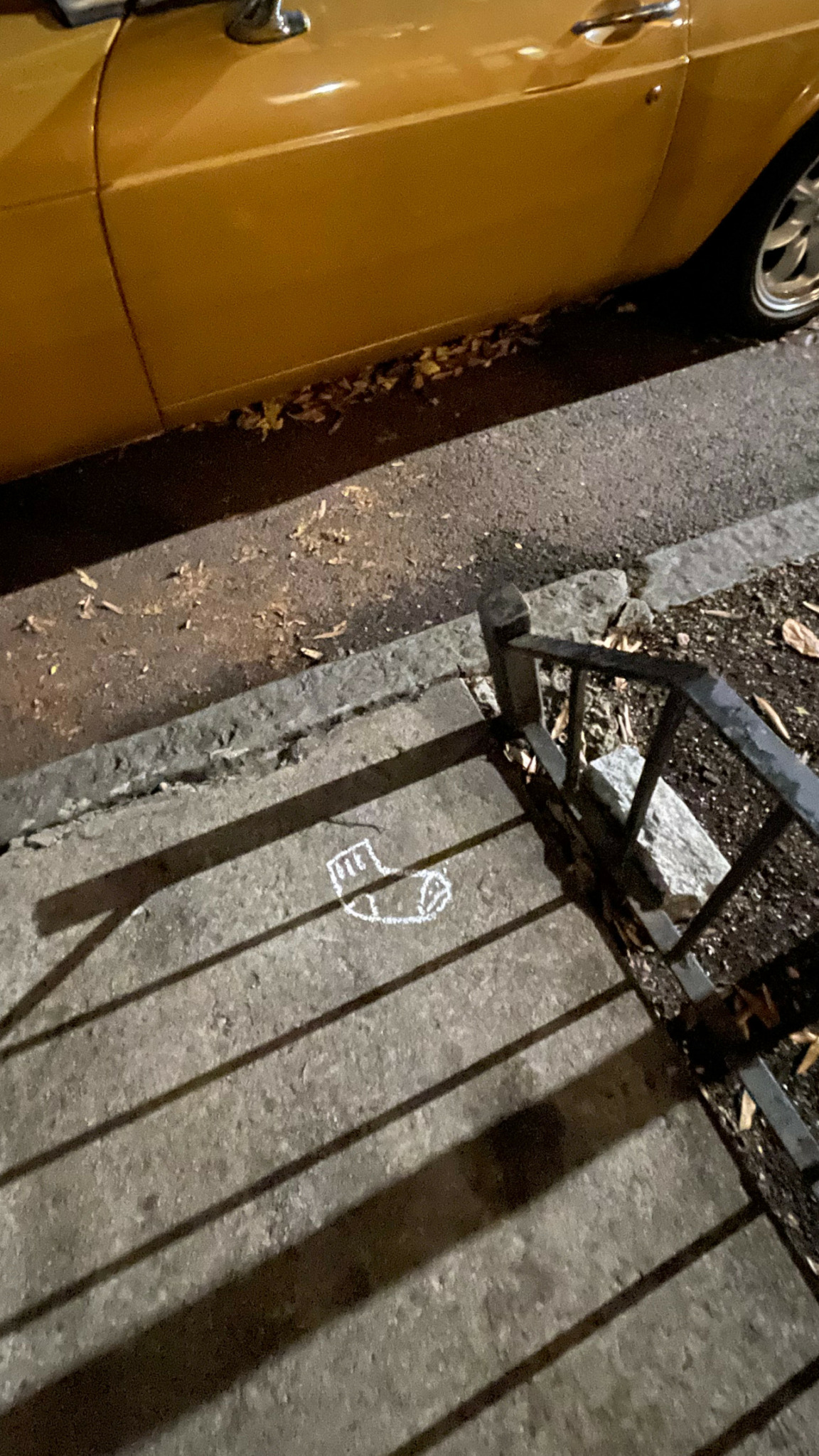We caught up with the brilliant and insightful Christi Bertelsen a few weeks ago and have shared our conversation below.
Christi, looking forward to hearing all of your stories today. We’d love to hear about a project that you’ve worked on that’s meant a lot to you.
I am working on my graduate thesis film for the Master’s in Directing program at the School of Visual Arts, under the instruction of Bob Giraldi. We students are tasked with creating festival-worthy short films, supported by a professional cast and crew. My project, Two Socks, is a unique blend of live-action, puppetry, stop-motion, and traditional animation, inspired by my time doing laundry in a New York laundromat.
The story follows a pair of living socks—Loafer and Derby—who are tragically separated in a laundromat and end up in the wardrobes of two strangers. In their quest to reunite, will these cotton soulmates bring together very human ones? The film, along with the street art I’m creating throughout the city, explores themes of absence, rediscovery, connection, love, and destiny, focusing on the overlooked and forgotten, while possibly finding love in unexpected places.
Drawing inspiration from works like Disney’s Johnny Fedora and Alice Bluebonnet and Aristophanes’ Origin of Love, the film combines live-action footage and stop-motion animation, using puppetry to animate the socks alongside real actors.

Christi, before we move on to more of these sorts of questions, can you take some time to bring our readers up to speed on you and what you do?
I have worked as an animator, storyboard artist, and animation director, with my award-winning films showcased on PBS and at the National Museum of the American Indian. A few animated projects I’ve worked on include Ice Age 2: The Meltdown, Generation Jets, Magical Girl Friendship Squad, and Team Toon. I’ve also storyboarded for clients such as Ford and Ralph Lauren.
I graduated from SVA’s Animation program and now teach in the BFA Animation and MFA Computer Arts departments. As a Native, queer, and Xennial artist, my work blends surrealism and emotional depth across various mediums. Currently, I’m crafting Two Socks with a professional yet DIY approach, fueled by curiosity, playfulness, and a passion for storytelling. It’s as if Baz Luhrmann and Michel Gondry created a Lesbian Rom-Com including puppets and animation.
What’s the most rewarding aspect of being a creative in your experience?
The most rewarding part of being an artist is living as my true self. I love teaching animation and watching my students grow, but creating is where I find the most fulfillment. Whether it’s animation, film, or music, expressing emotions is what drives me. For me, the connection is everything. It could be something simple, like putting a graffiti sock in an unexpected spot to bring a smile, or telling a bigger story. While I don’t always highlight it, my work is shaped by my queer and Native identity. Ideas about life, destiny, and love are personal, even within a culture, but we all share universal experiences—connection, loss, and longing. Ultimately, I want to connect with others through emotion.

What can society do to ensure an environment that’s helpful to artists and creatives?
Society can best support artists by shifting away from putting a purely monetary value on art. While I get that art is an industry and my student film will need funding, creativity is something we’re all born with. At some point, we’re told to focus on careers that offer financial security, and many people give up art because they don’t think they can make a living from it. Art, especially commercial art, is tough—companies often look for cheaper ways to create not to make more art, but to make more money. This leads to the belief that art is only valuable if people will pay for it.
The debate around AI art highlights this issue. While I think AI can be a useful tool, the problem is that art isn’t valued the same way other professions are. If we encourage creativity and recognize its cultural value, we can change that. As Dead Poets Society says, “We don’t read and write poetry because it’s cute. We read and write poetry because we are members of the human race. And the human race is full of passion.” This is the sentiment I want for all of us. I’ve heard people say students shouldn’t take loans for fields like animation or film, but why are these careers valued less? I believe they’re just as important as any other.



Contact Info:
- Website: https://www.bertelsen.nyc/
- Instagram: https://www.instagram.com/christi.bertelsen
- Facebook: https://www.facebook.com/BertelsenNYC/
- Linkedin: https://www.linkedin.com/in/christibertelsen/
Image Credits
Self-portrait


